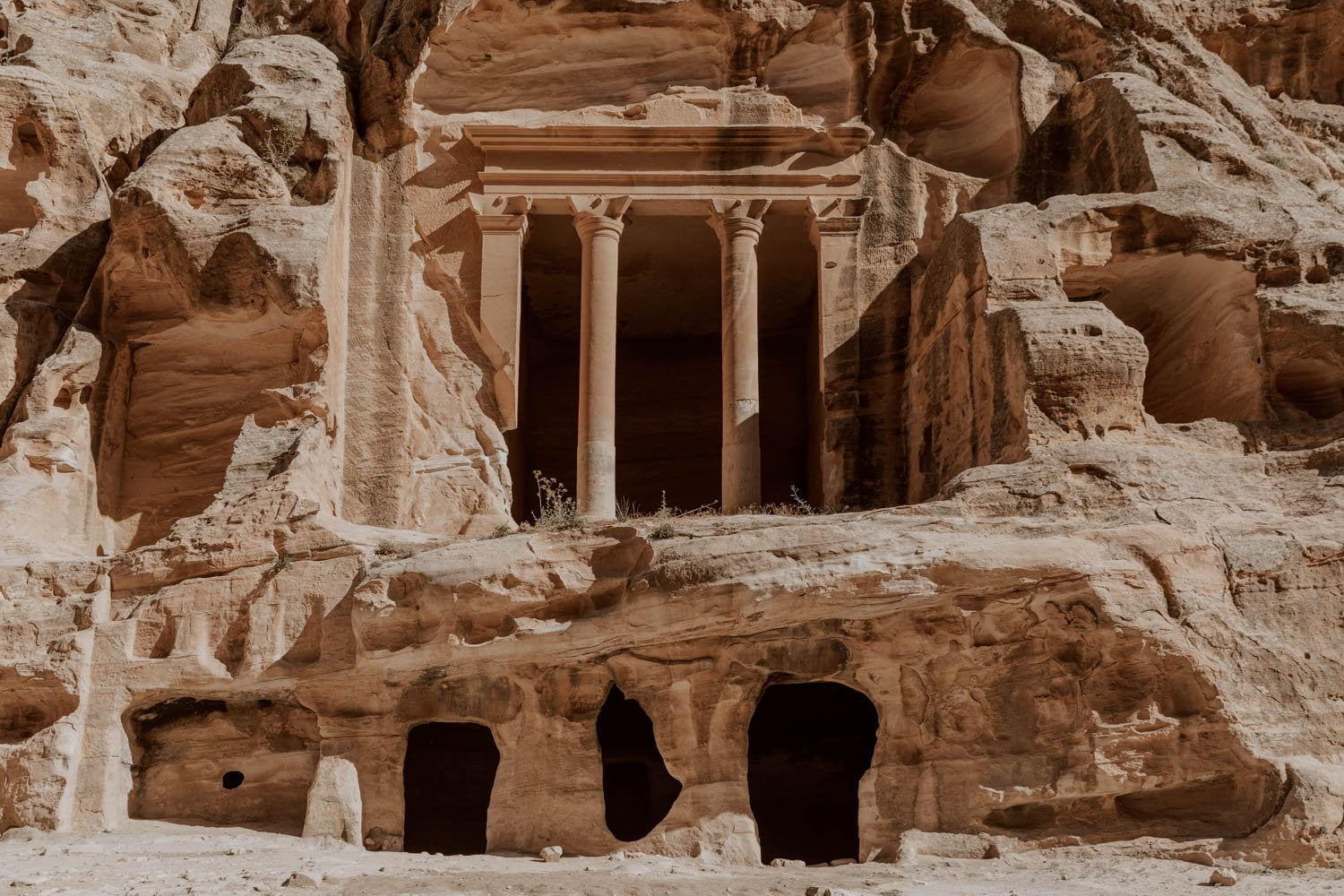
Introduction
Nestled amidst the stunning landscapes of Jordan, a hidden gem awaits those who seek to delve into the mysteries of ancient civilizations. Little Petra, also known as Siq al-Barid, is an archaeological site located just a few kilometers north of the world-renowned Petra, and it offers a captivating journey into the rich history of the Arabian Peninsula. Often overshadowed by its larger and more famous neighbor, Little Petra stands as a testament to the ingenuity and grandeur of the Nabataean civilization. Let us embark on a virtual tour of this extraordinary site and unravel its secrets.
A Glimpse into the Past

Little Petra served as an important trading outpost along the famous Incense Route, which connected southern Arabia with the Mediterranean world. It flourished from the 1st century BCE to the 1st century CE, mirroring the rise and fall of its sister city, Petra. Although smaller in scale, Little Petra showcases remarkable architectural features that mirror the grandeur of its more famous counterpart.
The Siq al-Barid Experience
Similar to the main entrance of Petra, Little Petra greets visitors with a narrow and winding gorge known as the Siq. However, unlike Petra’s Siq, this one is significantly shorter, spanning a mere 350 meters. As you meander through the Siq al-Barid, the sandstone walls rise dramatically, creating an awe-inspiring natural corridor that evokes a sense of wonder and anticipation.
The Treasury and Beyond

Emerging from the Siq al-Barid, visitors are greeted by a sight that mirrors the iconic Treasury of Petra. Known as Al-Beidha in Arabic, the complex features a façade carved into the rock face, showcasing intricate details and stunning craftsmanship. The Treasury at Little Petra, while smaller in scale, stands as an architectural marvel, offering a glimpse into the artistic prowess of the Nabataean civilization.
Beyond the Treasury, the site reveals a network of caves and chambers. These spaces were once used as dwellings, storage areas, and places of worship. The interiors of the caves exhibit remnants of ancient frescoes and paintings, shedding light on the daily lives of the Nabataean people.
Exploring the Royal Tombs

Little Petra is also home to a collection of impressive tombs, reminiscent of those found in Petra. These tombs, carved into the rock face, were the final resting places of Nabataean nobility and elites. The intricate facades, adorned with ornate details and architectural flourishes, reflect the prosperity and social status of their occupants.
Conclusion
Little Petra is a testament to the architectural brilliance of the Nabataean civilization. Located near Petra, it offers a unique charm that history enthusiasts and explorers will appreciate. As you wander through its narrow passages and admire the rock-cut facades, Little Petra’s rich history will leave a lasting impression. It’s tranquil atmosphere and historical significance create an immersive experience that transports you back in time.
For those who have already visited Petra, Little Petra provides a chance to delve deeper into the Nabataean civilization. With a smaller scale and fewer crowds, it offers an intimate setting for exploration and reflection. To preserve this site for future generations, please show respect by following designated trails and refraining from damaging ancient structures.
Efforts to promote Little Petra as a standalone destination have gained momentum, benefiting the local economy. Sustainable tourism initiatives have been developed to showcase the area’s rich cultural heritage and provide authentic experiences.
In conclusion, Little Petra’s architectural wonders, historical significance, and natural beauty make it a captivating destination. Whether you’re a history enthusiast, an adventurous traveler, or simply curious, Little Petra invites you to embark on a journey through time and immerse yourself in the ancient Arabian world. Discover this hidden gem and unlock the secrets of a bygone era.
